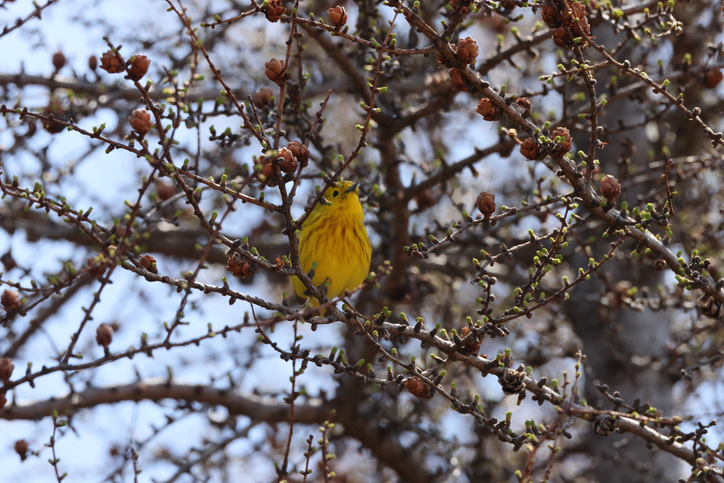Residents in the northernmost tundra of Canada are sharing images of surprising critters that have made their way up to the region.
What’s happening?
A yellow warbler and a brown bat were spotted in Nunavut in recent months, sparking discussion over ecological changes in the region.
“It was my first time to see the bird, but a couple of my friends told me they had seen it before,” Natasha Tapatai, a Baker Lake, Nunavut resident who snapped the yellow bird, told Nunatsiaq News.
 Yellow Warbler (Setophaga petechia) Photo Credit: iStock
Yellow Warbler (Setophaga petechia) Photo Credit: iStock
Nunavut is a territory in northern Canada that comprises the land of the native Inuit community. It is primarily made up of tundra, making it typically inhospitable to warblers and bats. However, warming global temperatures have made way for shrub growth in the area.
According to Nunatsiaq News, warblers breed in willow thickets, which are found near lakes and wetlands. These thickets have begun growing in Nunavut and serve as an indicator of the changing climate there.
Meanwhile, the brown bat spotted on a porch in a neighboring town seemed to have found itself far from a livable region for the species. The northern climate and its lack of trees and boulders with safe cracks and crevices limit the creature’s ability to breed.
Want to go solar but not sure who to trust? EnergySage has your back with free and transparent quotes from fully vetted providers that can help you save as much as $10k on installation.
To get started, just answer a few questions about your home — no phone number required. Within a day or two, EnergySage will email you the best local options for your needs, and their expert advisers can help you compare quotes and pick a winner.
Why is bird migration important?
Changes in bird migration have the ability to impact ecosystems across the world. Birds eat pests and help maintain the balance of the food chain. Some species are also essential pollinators, playing a crucial role in maintaining the global food supply.
Without reliable bird migration, a region that relies on them can suffer hits to the local agricultural communities. This puts crops and economies at risk.
Additionally, migration patterns reveal changes in the environment, such as the warming tundras in Nunavut. To the local community, this can serve as a warning about the challenges they may face as extreme weather events worsen as a result of rising temperatures linked to pollution from dirty energy and landfills.
What’s being done about bird migration?
According to Nunatsiaq News, researchers are monitoring the movement of yellow warblers, which they say is not an anomaly.
“As temperatures warm and vegetation shifts, you might get willows and thickets further north,” High Arctic Gull Research Group founder Mark Maftei said, per Nunatsiaq News. “The range of the species is going to expand further north, too, and it’s not unprecedented.”
There are steps you can take to reduce the amount of pollution you put into the atmosphere and take local action. The first step is to educate yourself on critical climate issues in order to figure out how best to tackle the problems closest to your community.
Join our free newsletter for good news and useful tips, and don’t miss this cool list of easy ways to help yourself while helping the planet.


